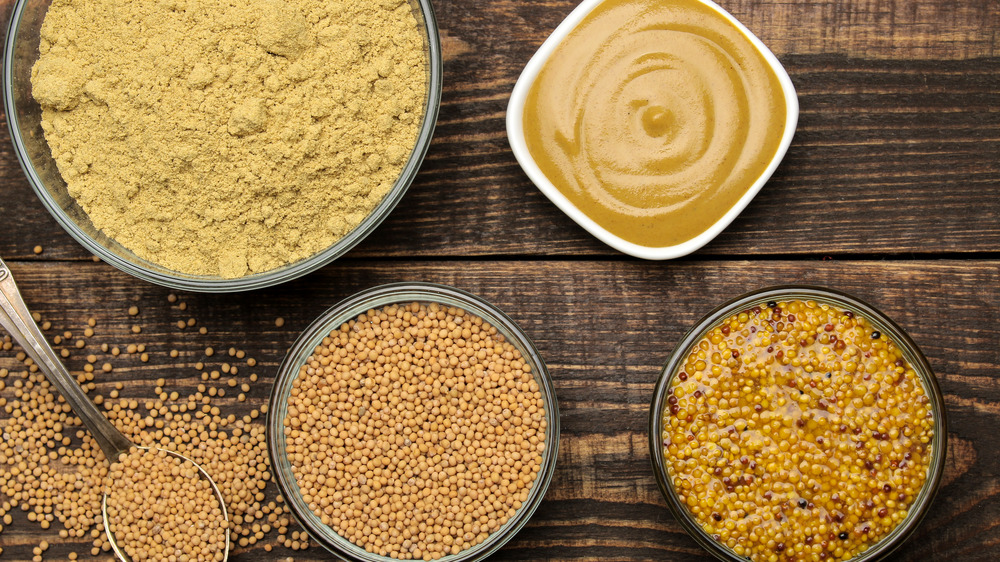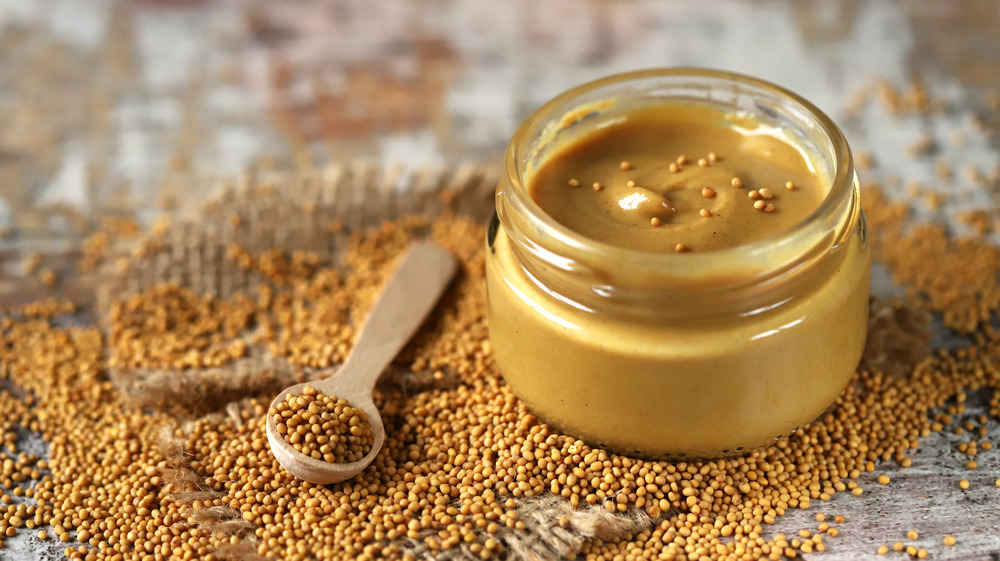The Difference Between Yellow Mustard And Spicy Brown Mustard
Whether drizzled atop a freshly-grilled hotdog, emulsified in a salad dressing, or slathered on a sandwich, it's no secret that mustard has become a staple condiment in modern-day cuisine (via FoodPrint). Mustard's origins, however, are not so modern, and its mouth-watering variations — such as classic yellow and spicy brown — are not all made the same.
According to Serious Eats, the origination of mustard can be traced back to early Roman cooking. During this time, cooks combined ground mustard seeds with unfermented grape juice (aka must) to make a paste called mustum ardens. The term, which translates to "burning must," was later shortened to "mustard" when the condiment reached the English-speaking world. At the core of its creation, mustard is made by combining ground mustard seeds with a liquid. The wide variety of taste, tang, and heat, however, is directly dependent on the type of seed being used, as well as what liquid is added to it. Milder mustards are usually made from yellow or white mustard seeds and vinegar, and hotter mustards with black or brown mustard seeds and water.
Aside from being delicious, Organic Facts says mustard provides a multitude of health benefits. Mustard seeds are rich in minerals like calcium, magnesium, phosphorus, and potassium, as well as antioxidants such as kaempferol, carotenoids, and isorhamnetin. According to the outlet, studies suggest that these properties make mustard seeds beneficial in combating inflammatory disorders such as psoriasis, relieving the uncomfortable symptoms of dermatitis, and may even help reduce the risk of coronary heart diseases. Mustard can also alleviate congestion for anyone suffering from cold and sinus problems.
Yellow and spicy brown mustard are more different than you'd think
Bright yellow in color and quite mild in flavor, Serious Eats explains that classic yellow mustard is created by combining finely ground yellow mustard seeds — also known as white mustard seeds — with vinegar and water, in addition to a few other mild spices, like turmeric. (Turmeric in particular contributes to yellow mustard's vibrant color.) Because yellow mustard seeds rest quite low on the heat scale, the outlet says this variation does not provide as much heat as other mustard varieties, making it a wonderful ingredient for dressings, barbecue sauces, and marinades, or topping hamburgers and hot dogs.
Unlike classic yellow mustard, spicy brown mustard is made from brown mustard seeds, and is soaked in less vinegar. Serious Eats says the combination of the hotter brown seeds and reduced acidity are what allow spicy brown mustard to come through with more of a punch. Additionally, the bran from the mustard seeds is not removed, which contributes to its coarse texture as compared to yellow and some other mustards. Spices such as cinnamon, ginger, and nutmeg are sometimes also added to spicy brown mustard for a more robust and earthy taste, which makes this variety of mustard a great partner for flavorful foods such as pastrami sandwiches, roast beef, and sausage.

